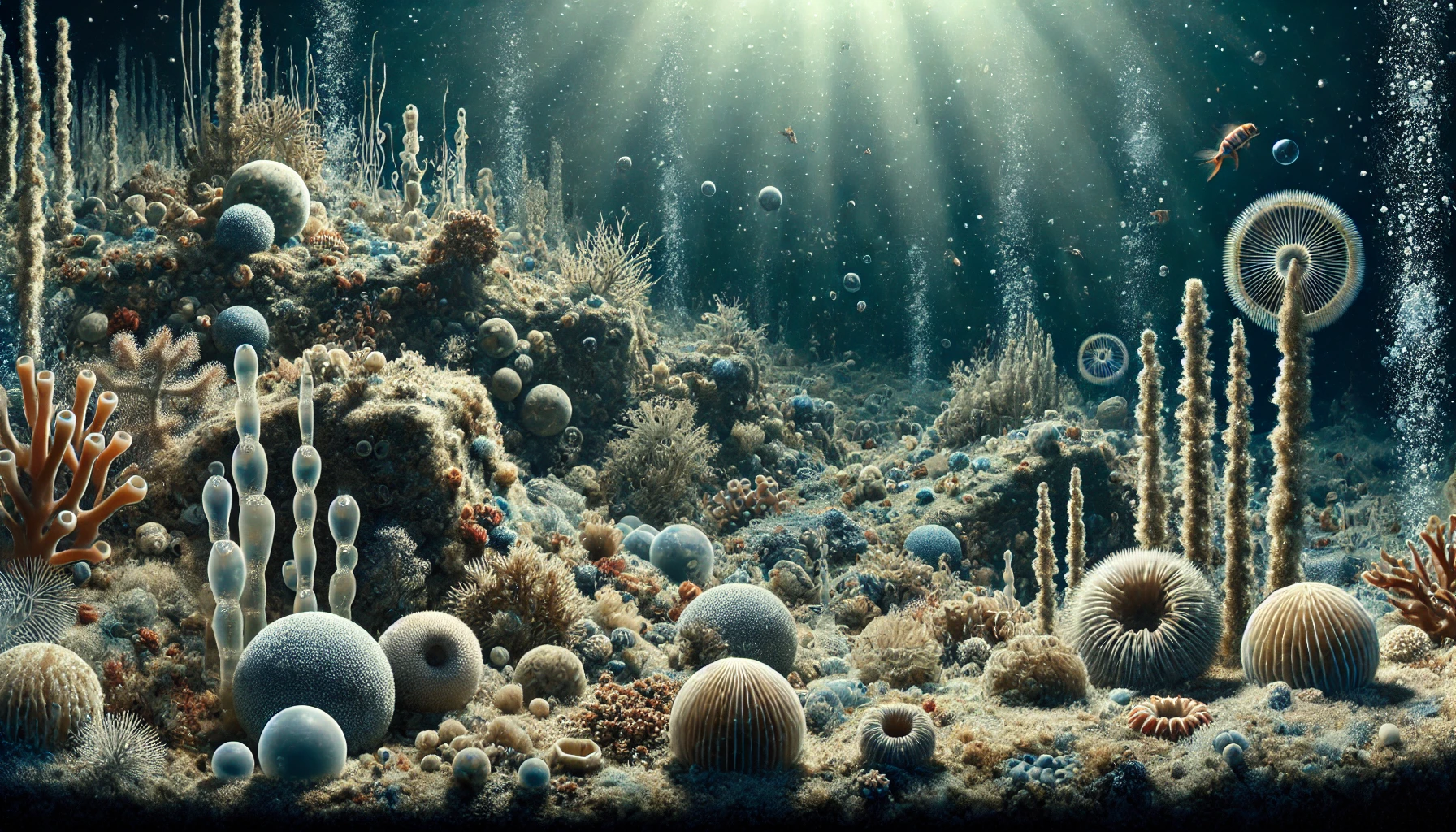Deep-seafloor biogenic sediments, nannofossils, play an important role in understanding marine ecosystems and environmental change. Their formation, distribution, and composition can be scientifically analyzed to study past marine environments and biological distributions, which can help us understand climate change and marine resource management.
Among the various sediments on the deep seafloor, those produced by the skeletons of organisms and their fragments are called biogenic sediments. The most common biogenic sediment on the deep seafloor is ooze. It is formed mainly from the shells and skeletons of dead floating organisms mixed with clay that has been transported away from land by wind or water currents. In the deep ocean floor, clay that does not form a nannoflow deposits about 2 millimeters over 1,000 years, whereas a nannoflow deposits about 1 to 6 centimeters over 1,000 years. This suggests that biological activity has a strong influence on deep-seafloor sediment formation.
The greater the amount of suspended organisms living in the surface water, and the slower the rate of dissolution after formation on the seafloor, the greater the amount of nannofossils deposited. This deposition process is linked to the marine ecosystem, and the rate of formation and composition of nannofish are important indicators of changes in the marine environment. For example, changes in ocean temperature or the movement of ocean currents can directly affect nannofish deposition. This is an important factor in the distribution and abundance of marine life, and analysis of nannofossils can be used to infer past marine environments.
Analyzing the composition and distribution of nannofishes found on the deep seafloor can lead to a variety of scientific discoveries. For example, areas of high abundance of a particular species may indicate changes in local current patterns or habitat for marine life. This is an important resource for understanding the dynamics of marine ecosystems. They also play an important role in the exploration and exploitation of marine resources. The mineral composition of the kelp helps predict the type and amount of marine resources, which provides important data for future resource management.
Sediments that contain at least 30% of carbonate, calcareous organism remains, such as coccoliths and foraminifera, are called calcareous nannofossils, while sediments that contain at least 30% of siliceous, siliceous organism remains are called siliceous nannofossils. Calcareous nannofossils are found in relatively warm, shallow waters. This is because colder waters contain more carbon dioxide, which dissolves carbonates, so deeper than the carbonate compensation depth, the skeletons or remains of organisms made up of carbonate components will dissolve and disappear. The carbonate compensation depth is the depth at which the supply of carbonate equals the dissolution of carbonate, which on average is about 4,500 meters. Calcareous plumes, which cover about 48% of the surface of the deep ocean floor, are concentrated in the central Atlantic and eastern Pacific. This suggests that calcareous floating organisms are active in certain parts of the marine ecosystem.
On the other hand, siliceous nannoplankton, which make up about 14% of the surface of the deep ocean floor, are also found at depths deeper than carbonate dissolution. In particular, silicoflagellates are most abundant where upwelling brings nutrient-rich water to the surface, as this is where many of the suspended organisms that make up silicoflagellates live. For example, near the Antarctic, where upwelling occurs and cold currents flow, diatoms are most commonly found on the deep seafloor because upwelling causes diatoms to grow in abundance. In addition, the long upwelling zone near the equator in the Pacific Ocean is also home to a large number of actinomycetes, one of the siliceous organisms.

Scientific analysis of the formation, distribution, and contents of the annuals can provide information about the paleocean environment and the distribution of living organisms when the sediments were deposited. For example, analyzing the types and proportions of foraminifera in a nannoflagellate can provide an estimate of the water temperature, salinity, and nutrient conditions at the time. This provides important data for paleoceanographic research and helps us understand past climate change and ecosystem evolution on Earth. The study of deep-seafloor dendrites plays an important role not only in modern oceanography, but in the earth sciences as a whole.
They also provide important data for climate change research. By analyzing the proportions and types of organic matter contained in the kelp, it is possible to track past atmospheric carbon dioxide concentrations and climate variability. This provides important information for predicting current and future climate change and can contribute to protecting the global environment. For example, by analyzing changes in the distribution of diatoms in salmonids, we can estimate past ocean temperatures and nutrient conditions, which can be compared to current changes in the marine environment.
Furthermore, these studies can provide important information for the exploration and management of marine resources, contributing to the maintenance of sustainable marine ecosystems. Dendrochronology is a key tool for studying past marine environments and will play an important role in future ocean management. This will equip us with better tools to understand our planet’s history and future.
 I’m a blog writer. I want to write articles that touch people’s hearts. I love Coca-Cola, coffee, reading and traveling. I hope you find happiness through my writing.
I’m a blog writer. I want to write articles that touch people’s hearts. I love Coca-Cola, coffee, reading and traveling. I hope you find happiness through my writing.